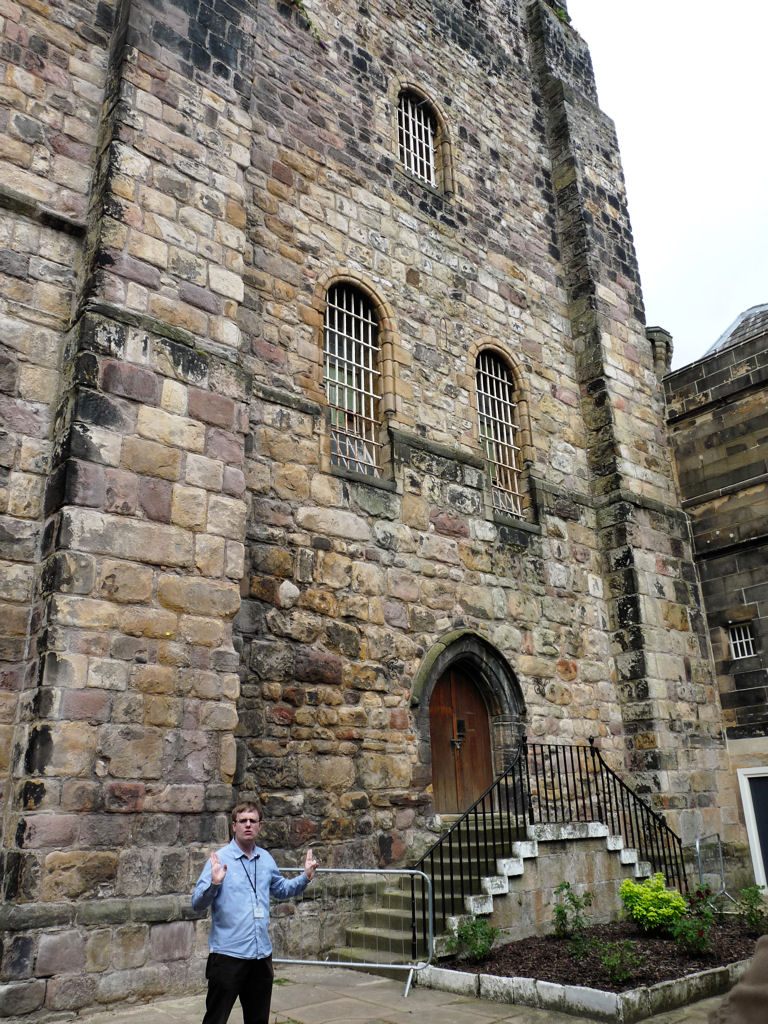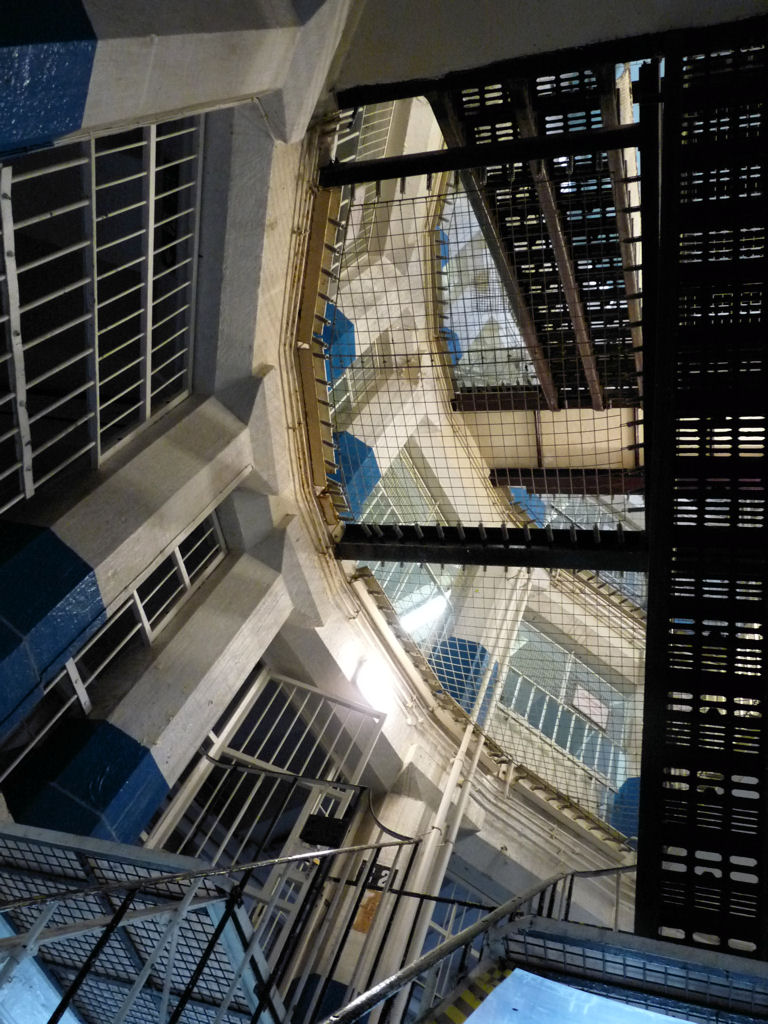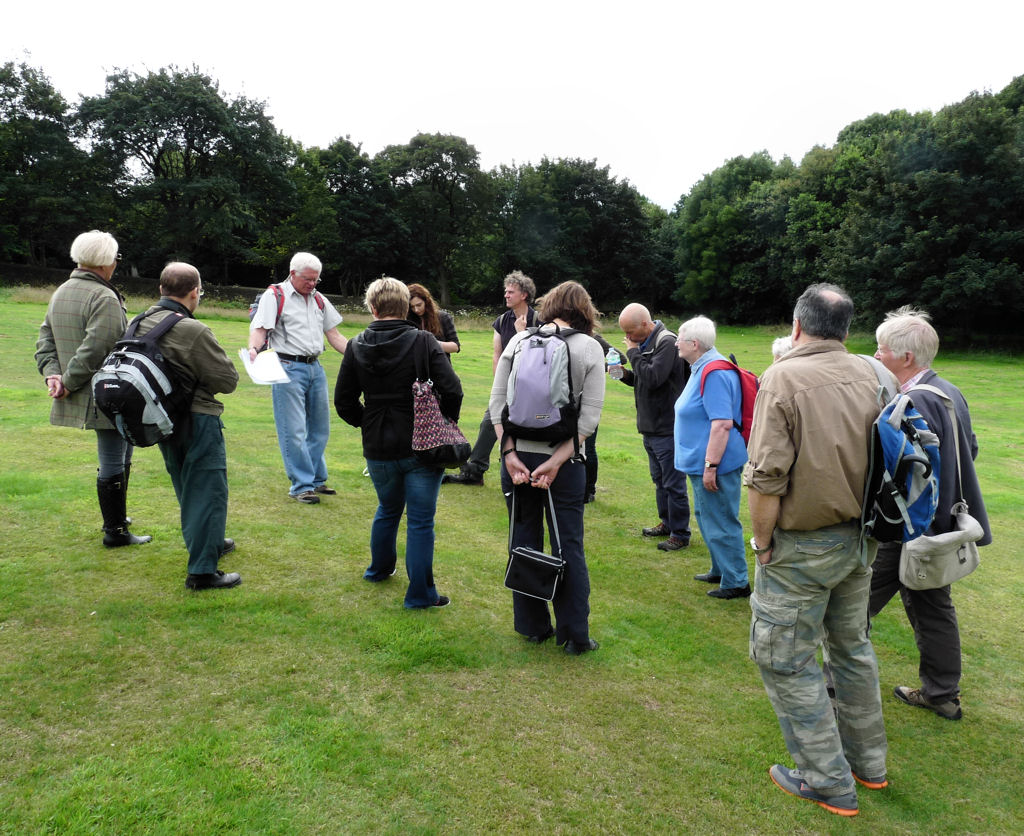Great turn out last Sunday for our trip to Lancaster, this year supplemented by a contingent from the Wyre Group and a group of friends from the Bolton Society. Our trip began with a guided tour of Lancaster Castle which is a fascinating complex of buildings with a long and rich history dating as far back as the 12th century. Often referred to as John O’Gaunts Castle it has been owned by the Duchy of Lancaster since 1265 and until 2011 was a fully functioning HM prison. The tour started on front of the Well Tower which dates from the early 14th century and is reputed to have held the Pendle Witches in its dungeon.
The tour started on front of the Well Tower which dates from the early 14th century and is reputed to have held the Pendle Witches in its dungeon. Our young tour guide then led us through the Debtor’s Prison to a courtyard in front of the Keep or Lungess Tower which is thought to be the oldest part of the Castle. The rounded arches of the windows date the Tower to around the early 12th century. In the later medieval period the ground floor was converted into a chapel but this hall finally ended up as a gymnasium when the Castle became a prison.
Our young tour guide then led us through the Debtor’s Prison to a courtyard in front of the Keep or Lungess Tower which is thought to be the oldest part of the Castle. The rounded arches of the windows date the Tower to around the early 12th century. In the later medieval period the ground floor was converted into a chapel but this hall finally ended up as a gymnasium when the Castle became a prison. The highlight of our tour however must have been the Shire Hall and Court Room, the latter being still used for Crown Court proceeding. On the back panel of the prisoner’s dock we were shown a hand ‘holdfast’ clamp and branding iron but were relieved to hear that they were no longer used to mark ‘malefactors’ with the letter M.
The highlight of our tour however must have been the Shire Hall and Court Room, the latter being still used for Crown Court proceeding. On the back panel of the prisoner’s dock we were shown a hand ‘holdfast’ clamp and branding iron but were relieved to hear that they were no longer used to mark ‘malefactors’ with the letter M.
Various other buildings visited included the holding cells where volunteers were invited to spend a few moments locked up inside with the lights out (not a pleasant experience).
We finally ended up in the last wing to be built in the Castle i.e. the Female Penitentiary which was an innovative design for its time. The fan-like ‘panoptican’ arrangement allowed observation of all the cells from a single central position. After our tour we were met by Andy Reilly from the Lancaster Heritage Group who took us to the George and Dragon on St George’s Quay where we ate our lunch (especially opened early for us by the proprietors, Mike and Anne Stewardson). Andy helped by Anne, who works for Oxford Archaeology North, then gave us a tour around Quay Meadow where the Heritage Group excavated last year.
After our tour we were met by Andy Reilly from the Lancaster Heritage Group who took us to the George and Dragon on St George’s Quay where we ate our lunch (especially opened early for us by the proprietors, Mike and Anne Stewardson). Andy helped by Anne, who works for Oxford Archaeology North, then gave us a tour around Quay Meadow where the Heritage Group excavated last year. The excavations, which were funded by the Duchy of Lancaster, exceeded their wildest expectations. With help from Dig Ventures, they uncovered evidence of buildings along the edge of the Meadow which probably represent warehouses along the original Roman wharf. Further across the Meadow towards Castle Hill, they also uncovered a section of Roman road heading towards the Quay side. These findings are particularly significant as no Roman remains were thought to have existed in this area of Lancaster.
The excavations, which were funded by the Duchy of Lancaster, exceeded their wildest expectations. With help from Dig Ventures, they uncovered evidence of buildings along the edge of the Meadow which probably represent warehouses along the original Roman wharf. Further across the Meadow towards Castle Hill, they also uncovered a section of Roman road heading towards the Quay side. These findings are particularly significant as no Roman remains were thought to have existed in this area of Lancaster. Andy then took us to the corner of Vicarage Field to view the remains of the Roman Bathhouse which the Group have recently been given stewardship of (when they get keys to the gate that is). The Bathhouse, which dates from the mid 3rd century, was discovered and excavated in the mid 70’s when the area was being developed. It’s not in the best of conditions at the moment which Andy’s Group are hoping to rectify.
Andy then took us to the corner of Vicarage Field to view the remains of the Roman Bathhouse which the Group have recently been given stewardship of (when they get keys to the gate that is). The Bathhouse, which dates from the mid 3rd century, was discovered and excavated in the mid 70’s when the area was being developed. It’s not in the best of conditions at the moment which Andy’s Group are hoping to rectify. From the Bathhouse we ventured further up the hill to where excavations earlier in the year took place as part of the City Council’s Beyond the Castle project. They were looking for the remains of the Roman Fort dating to the last phase of the Roman occupation. Chris Birkett (with of our company from the Wyre Group), having worked on the site,was able to give us in depth detail of what they found.
From the Bathhouse we ventured further up the hill to where excavations earlier in the year took place as part of the City Council’s Beyond the Castle project. They were looking for the remains of the Roman Fort dating to the last phase of the Roman occupation. Chris Birkett (with of our company from the Wyre Group), having worked on the site,was able to give us in depth detail of what they found.  Previous excavations in the 1920’s and 70’s revealed evidence of a series of forts dating from the 1st to 4th centuries AD. Chris said this new work was able to confirm the existence of a late ‘Shore’ fort, along with road surfaces, a drain and, surprisingly, a stone-lined well set within the thickness of 4m-wide walls. For safety reasons the well could only be partially dug out; however a £15k grant is being sought to enable it to be fully excavated which has the potential of revealing some very interesting artifacts.
Previous excavations in the 1920’s and 70’s revealed evidence of a series of forts dating from the 1st to 4th centuries AD. Chris said this new work was able to confirm the existence of a late ‘Shore’ fort, along with road surfaces, a drain and, surprisingly, a stone-lined well set within the thickness of 4m-wide walls. For safety reasons the well could only be partially dug out; however a £15k grant is being sought to enable it to be fully excavated which has the potential of revealing some very interesting artifacts. (View of the distant Lake District form Castle Hill)
(View of the distant Lake District form Castle Hill)
With time on our hands our final visit of the day was in the City Museum. A great array of artifacts on display ranging from the Pre-historic to the modern day kept us suitably entertained. Of particular interest for me though was the section on the King’s Own Royal Regiment which was based in Lancaster. There was also a fascinating special exhibition commemorating the 100th anniversary of the Battle of the Somme.
All in all it was a great day out and I would like to thank Anne and Chris on behalf of the Society for their impromptu site talks and special thanks to Andy Reilly for looking after us in the afternoon.
